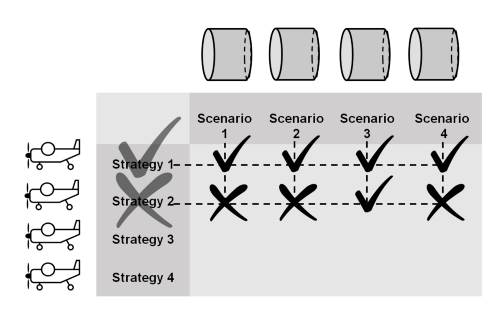Here's how to test if your business strategy is future-fit
The strategy that hold up against all, or most, of the scenarios can then be considered to be more future-fit than the rest.

If you want to test the performance of the specific design of airplane wing you would conduct testing of that wing in a wind tunnel.
The design of airplane wings are highly contextually-sensitive. They need to perform well under various conditions in order to be considered safe and reliable. Understandably then - designers test their performance in under numerous potential wind and weather-related scenarios.
Compiling a good business strategy is a lot like designing a decent airplane wing. Business strategy cannot be useful in the medium to long-term unless it is contextually robust and has been assessed for its relevance under multiple future scenarios.
To test the versatility and viability of various strategies it is then wise to consider them under a series of scenarios - assigning them a rating in each case.
This type of assessment is called wind tunnelling and was the brainchild of Kees van der Heijden of Shell.

The idea is to plot your various future scenarios on the horizontal axis (various conditions in your wind tunnel) and your strategies on the vertical axis (your wing designs) and through a process of collaborative interrogation, assess the viability of each strategy against each future scenario.
The strategy that hold up against all, or most, of the scenarios can then be considered to be more future-fit than the rest.
This is an incredibly simple process to execute, but what it does do is it ensures that your business strategy is rooted in futures-thinking; that it holds up to possible future outcomes and recognises that business doesn't operate in a contextual vacuum.
This process also adds incredible richness and value to scenario planning. If you are going to the effort of hiring a facilitator and spending the time to produce a set of good scenarios, wind tunnelling transforms those scenarios into a very powerful and practical decision-making tool.
More:



